 Excessive amounts of uric acid in the bloodstream are not limited to only humans. Gout can affect our loving canine and feline friends, as well. Whereas humans are more likely to experience crystal deposits in the joint extremities, animals tend to grow uric acid crystals in their urine. When animals are unable to assimilate calcium and other minerals, abnormal uric acid and calcium levels can also deposit into the paws, toes, elbows, neck, ears, and tongue. This is know as calcified skin lesions, or Casinosis Cutis, and more common in breeds such as Boxers and Boston Terriers. Calcium “Gout” can also create a chalky liquid that can ooze from the paws. Continue reading “Gout can be found in dogs and other animals”
Excessive amounts of uric acid in the bloodstream are not limited to only humans. Gout can affect our loving canine and feline friends, as well. Whereas humans are more likely to experience crystal deposits in the joint extremities, animals tend to grow uric acid crystals in their urine. When animals are unable to assimilate calcium and other minerals, abnormal uric acid and calcium levels can also deposit into the paws, toes, elbows, neck, ears, and tongue. This is know as calcified skin lesions, or Casinosis Cutis, and more common in breeds such as Boxers and Boston Terriers. Calcium “Gout” can also create a chalky liquid that can ooze from the paws. Continue reading “Gout can be found in dogs and other animals”
Category: Uncategorized
Is Distilled Water Good or Bad for you?
 In a desperate search to consume a safer water source than the parasite, dioxin and chlorine ridden tap water, many resort to distilled water. Contrary to popular belief, distilled water is acidic. Distilled water is boiled until it evaporates. This vapor is then condensed back into liquid form. Hypothetically, distilled water should offer us a neutral pH balance around 7.0 to provide an alkaline and purified drinking source. However, carbon dioxide in the air dissolves into the water immediately upon exposure decreasing the pH and turning it acidic. Additionally, the distillation process strips the water of its minerals and could lead to electrolyte imbalances in the body. When you consume mineral free water over a long period of time the body will pull electrolytes from your tissues in order to function properly and eliminate waste.
In a desperate search to consume a safer water source than the parasite, dioxin and chlorine ridden tap water, many resort to distilled water. Contrary to popular belief, distilled water is acidic. Distilled water is boiled until it evaporates. This vapor is then condensed back into liquid form. Hypothetically, distilled water should offer us a neutral pH balance around 7.0 to provide an alkaline and purified drinking source. However, carbon dioxide in the air dissolves into the water immediately upon exposure decreasing the pH and turning it acidic. Additionally, the distillation process strips the water of its minerals and could lead to electrolyte imbalances in the body. When you consume mineral free water over a long period of time the body will pull electrolytes from your tissues in order to function properly and eliminate waste.
Did you know that soda and other soft drinks are made with distilled water? As if soda isn’t already bad enough for us, heavy soda consumers are literally stripping and dumping large amounts of vital minerals (calcium, magnesium, and other trace minerals) into their urine. Mineral loss can quickly lead to any number of degenerative diseases including coronary heart disease, high blood pressure, arrhythmia, osteoarthritis, osteoporosis, hypothyroidism and more. Minerals are essential to our body’s pH balance and acidic environments only speed up aging and disease development. Continue reading “Is Distilled Water Good or Bad for you?”
New evidence of increased risk of death with Febuxostat (Uloric)
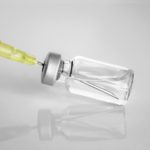 According to the latest CARES trial, the Gout drug Febuxostat (Uloric) failed up against Allopurinol when it came down to a combined rate of fatal and nonfatal adverse events for those that suffer with both Gout and Cardiovascular disease. In fact, there was a significant increased risk of death for those that took this drug for Gout while also suffering from heart disease.
According to the latest CARES trial, the Gout drug Febuxostat (Uloric) failed up against Allopurinol when it came down to a combined rate of fatal and nonfatal adverse events for those that suffer with both Gout and Cardiovascular disease. In fact, there was a significant increased risk of death for those that took this drug for Gout while also suffering from heart disease.
The trial was mandated by the FDA and consisted of 6,190 patients, 84% of which were men. Cardiovascular risk is naturally increased in patients with Gout. The study was attempting to look at any difference in outcome for these patients taking Febuxostat, a nonpurine xanthine oxidase inhibitor, or those taking Allopurinol, a purine base analogue xanthine oxidase inhibitor. The patients were followed for a median of 32 months, and a maximum of 85 months. Without diving into all of the ratio statistics, the all-cause and cardiovascular mortality rate was higher in the Febuxostat group, 34% and 22% higher respectively. Continue reading “New evidence of increased risk of death with Febuxostat (Uloric)”
Acetaminophen (Tylenol) and the hidden dangers
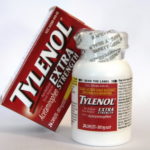 Acetaminophen (also labeled as Paracetamol, or more commonly known as Tylenol) is one of the most widely used OTC (over the counter) pain medications on the shelves today. Most of us don’t even think twice about taking something we can readily obtain from a local store when the occasional ache or pain calls for such. However, acetaminophen may just be one of the most dangerous choices on the market. Even when taken as prescribed, acetaminophen can be potentially life-threatening. As with many OTC medications, we tend to be a bit too liberal with dosage recommendations, rarely fearing taking 3 or 4 rather than the suggested 2 pills. When it comes to this pain reliever, failing to adhere to the recommended dosages could prove to be lethal. Severe health problems like liver damage and death have been reported even in so-called “mild” overdoses. In fact, hospitals deal with more acetaminophen overdoses annually than they do opiate overdoses. I can only imagine the shock and dismay, or your utter refusal to believe such a statistic — especially considering you’ve probably never heard of any of this….. Continue reading “Acetaminophen (Tylenol) and the hidden dangers”
Acetaminophen (also labeled as Paracetamol, or more commonly known as Tylenol) is one of the most widely used OTC (over the counter) pain medications on the shelves today. Most of us don’t even think twice about taking something we can readily obtain from a local store when the occasional ache or pain calls for such. However, acetaminophen may just be one of the most dangerous choices on the market. Even when taken as prescribed, acetaminophen can be potentially life-threatening. As with many OTC medications, we tend to be a bit too liberal with dosage recommendations, rarely fearing taking 3 or 4 rather than the suggested 2 pills. When it comes to this pain reliever, failing to adhere to the recommended dosages could prove to be lethal. Severe health problems like liver damage and death have been reported even in so-called “mild” overdoses. In fact, hospitals deal with more acetaminophen overdoses annually than they do opiate overdoses. I can only imagine the shock and dismay, or your utter refusal to believe such a statistic — especially considering you’ve probably never heard of any of this….. Continue reading “Acetaminophen (Tylenol) and the hidden dangers”
Gout, uric acid, and risk of death
 Gout affects an estimated 4% of the population, or around 1 in 25 people. Evidence suggests this number is growing and is certainly affecting a larger demographic than in the past. A lot of confusion has surrounded the specifics on how high levels of uric acid may affect the heart and kidneys, even when acute Gout attacks are not present.
Gout affects an estimated 4% of the population, or around 1 in 25 people. Evidence suggests this number is growing and is certainly affecting a larger demographic than in the past. A lot of confusion has surrounded the specifics on how high levels of uric acid may affect the heart and kidneys, even when acute Gout attacks are not present.
There have been studies attempting to separate the mortality rates of those with other risk factors, namely cardiovascular disease and diabetes, from those with just Gout and/or high uric acid levels. The findings seem to suggest that Gout and high uric acid levels are independently responsible for higher death rates across most age, sex, and race subgroups independent of other pre-existing conditions. The University in Limerick found those with the high serum uric acid levels displayed at 77% higher risk of death from all causes, and a 209% higher risk of cardiovascular death. While pre-existing conditions such as obesity, hypertension, diabetes, etc. are strongly associated with a higher death risk, the results did not decrease by much when those factors were removed.
What does this mean for the Gout sufferer? Continue reading “Gout, uric acid, and risk of death”
Is Soy Good or Bad?
 Soy can provide a significant amount of protein, vitamins, minerals and polyunsaturated fatty acids. The soybean is also a source of resveratrol, phytosterols, and isoflavones — all of which have been scientifically linked to providing benefits for a number of health conditions.
Soy can provide a significant amount of protein, vitamins, minerals and polyunsaturated fatty acids. The soybean is also a source of resveratrol, phytosterols, and isoflavones — all of which have been scientifically linked to providing benefits for a number of health conditions.
However, there is a dark side to soy, particularly unfermented soy products – dark enough to consider its inherent dangers to outweigh its benefits. The Weston A. Price Foundation is a valuable source for accurate information about our nutrition and health. They are dedicated to putting nutrient-dense foods back on our tables and have done a great job researching this subject to provide us with the truth and myths about soy. Their website contains numerous studies, over several years, should you be interested diving in a bit deeper. Weston A. Price summarizes soy dangers, myths, and truths as follow: Continue reading “Is Soy Good or Bad?”
Low-fat Diet Myths and Our Deteriorating Health
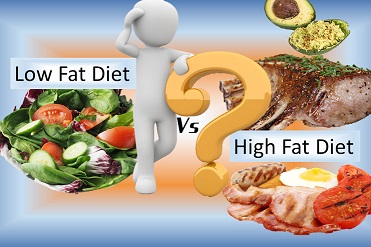
Is it just a coincidence that ever since we adopted low-fat and fat-free diet plans our health deteriorated? The craze began back in the 70’s and 80’s, and by the early 90’s foods with little to no fat were flying off the shelves. The American Heart Association, food manufacturers, physicians, and even drug manufacturers had convinced us that all saturated fats led to obesity and heart disease. People began trading nuts for pretzels, whole milk for skim, potatoes -hold the sour cream, and even still buying cookies so long as they were labeled “fat free.” Dietary fats and all cholesterol were deemed to be bad for our health. Yet, over this same 30+ year time span of ‘healthier’ eating the incidences of obesity, diabetes and cardiovascular disease have soared to alarming rates. In addition to all of the fat-free products flying off of the shelves, so have the cholesterol-lowering and blood pressure lowering drugs.
So wait…… Continue reading “Low-fat Diet Myths and Our Deteriorating Health”
Can Cellular Dehydration be a major cause of Disease?
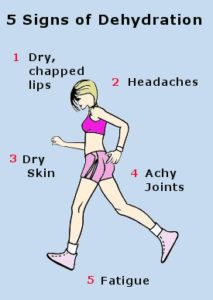 Yes. Proper hydration is a fundamental requirement to maintain the health of our bodies. Our bodies are 75% water and 25% solid matter. Water is needed to eliminate waste and provide nourishment, in addition to regulating billions of other activities in the body. Hydration takes place when the minerals connect with water and provide electrolytes, cellular fluids, and tissue balance. This balance is crucial to preserve the electrical charge of our cells, as well as maintain a healthy pH of our tissues and cells.
Yes. Proper hydration is a fundamental requirement to maintain the health of our bodies. Our bodies are 75% water and 25% solid matter. Water is needed to eliminate waste and provide nourishment, in addition to regulating billions of other activities in the body. Hydration takes place when the minerals connect with water and provide electrolytes, cellular fluids, and tissue balance. This balance is crucial to preserve the electrical charge of our cells, as well as maintain a healthy pH of our tissues and cells.
There is a staggering number of people who are severely dehydrated at a cellular level and virtually have no idea. Many believe they are hydrating by drinking coffee, tea, juice, soft drinks, and even beer. Continue reading “Can Cellular Dehydration be a major cause of Disease?”
Arthritis and Gout are no longer considered “old man diseases”……..and they are dangerous!
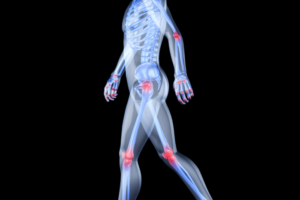
These painful joint conditions were once considered the inevitable outcome of old aging joints. However, these painful conditions have more than doubled in the past 10-15 years, with a shocking amount of sufferers now found to be under the age of 40. Doctors have seen the sharpest rise in patients in their 20’s and 30’s, some 30% since 2012, suffering from a disease that was once thought to be limited to royalty. Not so coincidentally, the rise in obesity, Diabetes Type 2, and prescriptions such as low-dose aspirin and diuretics has occurred almost simultaneously.
Even still there is large percentage of the population that suffers silently having never been diagnosed, or sometimes misdiagnosed. Gout especially can be overlooked by medical professionals due to inaccurate blood measurements of Uric Acid. Unless the fluid is directly aspirated from the joint it can be difficult to identify. Many that are under an attack at the time they are seen by a physician will have low to normal blood serum Uric Acid levels. Why is this? Continue reading “Arthritis and Gout are no longer considered “old man diseases”……..and they are dangerous!”
This Is Your Brain On Turmeric……
 Are we doomed for cognitive decline as we age? Not necessarily. There are plenty of healthy, thriving older adults pushing into their 70’s and 80’s with cognitive functioning as well as, sometimes even better than, younger adults. Cognitive decline is far from uniform, with many variables in play. However, 1 in 9 Americans will suffer with some level of decline by the age of 65, with 1 in 3 by the age of 85.
Are we doomed for cognitive decline as we age? Not necessarily. There are plenty of healthy, thriving older adults pushing into their 70’s and 80’s with cognitive functioning as well as, sometimes even better than, younger adults. Cognitive decline is far from uniform, with many variables in play. However, 1 in 9 Americans will suffer with some level of decline by the age of 65, with 1 in 3 by the age of 85.
Where and how does it all begin? We know that inflammation is at the heart of all disease. Often times the signs of chronic inflammation begin with achy muscles and joints. We find ourselves at the doctor being prescribed something specifically for that ailment. What we need to be considering is how that inflammation could be affecting other parts of our body, as well. We are programmed to treat each symptom individually, and as separate conditions, when we should actually be addressing the inflammation in the body as a whole before it continues to creep into and destroy other parts of the body. What does this have to do with your brain? Continue reading “This Is Your Brain On Turmeric……”
